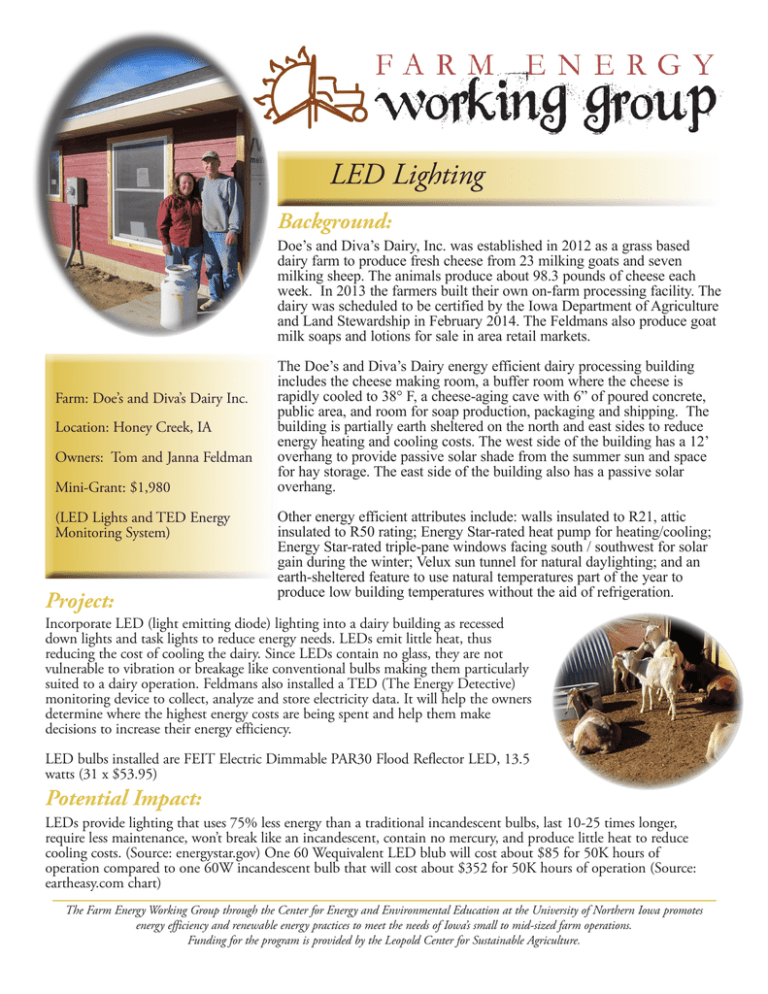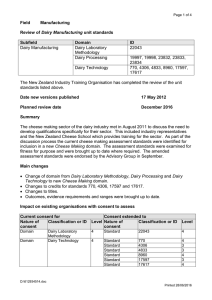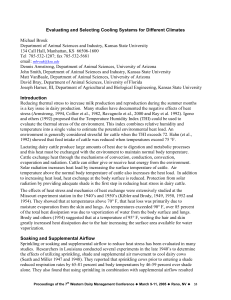LED Lighting Background:
advertisement

LED Lighting Background: Doe’s and Diva’s Dairy, Inc. was established in 2012 as a grass based dairy farm to produce fresh cheese from 23 milking goats and seven milking sheep. The animals produce about 98.3 pounds of cheese each week. In 2013 the farmers built their own on-farm processing facility. The dairy was scheduled to be certified by the Iowa Department of Agriculture and Land Stewardship in February 2014. The Feldmans also produce goat milk soaps and lotions for sale in area retail markets. Farm: Doe’s and Diva’s Dairy Inc. Location: Honey Creek, IA Owners: Tom and Janna Feldman Mini-Grant: $1,980 (LED Lights and TED Energy Monitoring System) Project: The Doe’s and Diva’s Dairy energy efficient dairy processing building includes the cheese making room, a buffer room where the cheese is rapidly cooled to 38° F, a cheese-aging cave with 6” of poured concrete, public area, and room for soap production, packaging and shipping. The building is partially earth sheltered on the north and east sides to reduce energy heating and cooling costs. The west side of the building has a 12’ overhang to provide passive solar shade from the summer sun and space for hay storage. The east side of the building also has a passive solar overhang. Other energy efficient attributes include: walls insulated to R21, attic insulated to R50 rating; Energy Star-rated heat pump for heating/cooling; Energy Star-rated triple-pane windows facing south / southwest for solar gain during the winter; Velux sun tunnel for natural daylighting; and an earth-sheltered feature to use natural temperatures part of the year to produce low building temperatures without the aid of refrigeration. Incorporate LED (light emitting diode) lighting into a dairy building as recessed down lights and task lights to reduce energy needs. LEDs emit little heat, thus reducing the cost of cooling the dairy. Since LEDs contain no glass, they are not vulnerable to vibration or breakage like conventional bulbs making them particularly suited to a dairy operation. Feldmans also installed a TED (The Energy Detective) monitoring device to collect, analyze and store electricity data. It will help the owners determine where the highest energy costs are being spent and help them make decisions to increase their energy efficiency. LED bulbs installed are FEIT Electric Dimmable PAR30 Flood Reflector LED, 13.5 watts (31 x $53.95) Potential Impact: LEDs provide lighting that uses 75% less energy than a traditional incandescent bulbs, last 10-25 times longer, require less maintenance, won’t break like an incandescent, contain no mercury, and produce little heat to reduce cooling costs. (Source: energystar.gov) One 60 Wequivalent LED blub will cost about $85 for 50K hours of operation compared to one 60W incandescent bulb that will cost about $352 for 50K hours of operation (Source: eartheasy.com chart) The Farm Energy Working Group through the Center for Energy and Environmental Education at the University of Northern Iowa promotes energy efficiency and renewable energy practices to meet the needs of Iowa’s small to mid-sized farm operations. Funding for the program is provided by the Leopold Center for Sustainable Agriculture.






